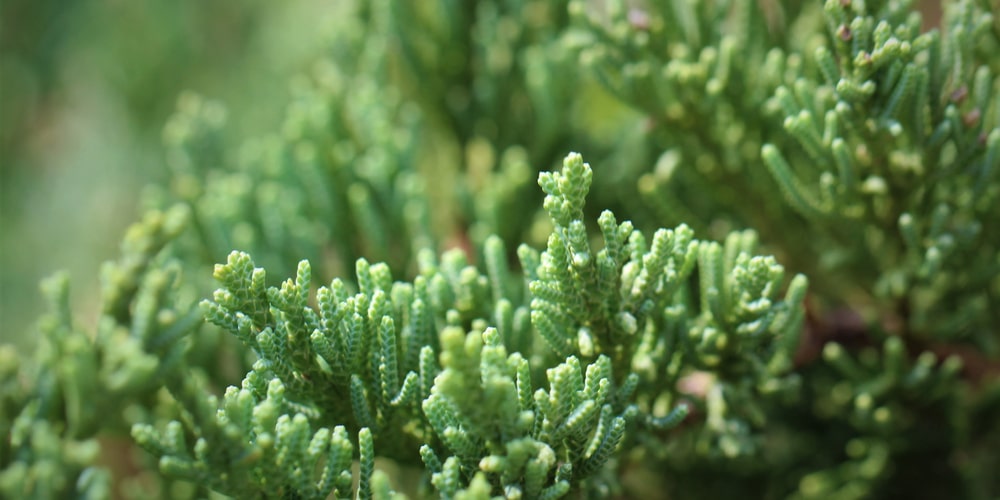Juniper parsoni is a dense, blue-green variety of juniper. Many gardeners and homeowners love it because it can thrive in a wide range of conditions, even in soils with poor nutrients. Like most juniper varieties, juniper parsoni can be seen growing on its own all over different places. However, this does not mean it will naturally grow in your garden.
If you want to add juniper parsoni to your array of short green shrubs, you have to plant it and care for it.

| Botanical Name | Juniperus Chinensis |
| Common Name | Juniper ‘parsoni’ |
| Plant Type | Perennial |
| Flower Color | No flowers |
| Size When Mature | 24 to 36 inches tall, 42-60 inches wide |
| Bloom Time | Grown for foliage |
| Sun Requirements | Full Sun |
| USDA Hardiness Zones | 4-9 |
| Soil PH Range | 6.0-7.0 |
| Soil Type | Slightly acidic well, drained soil |
| Water Needs | Medium |
| Native Area | Asia |
This article will cover basic information about these evergreen shrubs and tips on caring for them so they can thrive in your garden.
What you need to know about juniper parsoni
Landscape care can be very hard, especially if you have poor soil. Juniper parsoni is a great low-growing landscaping plant that could bring life to any yard with poor soil. It is cold hardy, salt-resistant, and can grow in virtually all soil types. This evergreen shrub has numerous needle-like leaves that give it beauty through the season.
Its feathery foliage is sure to add a beautiful contrast to your landscape.
Juniper parsoni grows to about 3 to 4 feet tall and 4 to 10 feet wide over time. The compactness of the plant does not grow out of bounds and will not get leggy even when grown in less than perfect conditions.
For beginner gardeners, juniper parsoni grow best on slopes, borders, islands, and embankments. When growing, it will shape itself as a hedge. However, you can trim back a few of its branches if you do not like its shape.
The shrub is low maintenance, which makes it a favorite and perfect choice for many people with poor soils. Generally, parsoni can grow in any type of soil as long as it is well-drained. The planting spot should be sunny for the plant to thrive. One good thing about the plant is that it is pest and disease-resistant.
How to care for Juniper parsoni
Even though juniper parsoni is considered a low-maintenance plant, it requires some conditions for it to thrive.
Light
Juniper parsoni grows best in full sunlight but can thrive in partial shade. Its leaves benefit from more exposure and will appear shinier when they receive full sun than when in partial shade.
For juniper parsoni leaves to remain green, there must be plenty of light to support photosynthesis. For best results, plant the shrub in an area that receives at least 8 hours of direct sunlight.
Water and soil
The shrub is tolerant of any type of soil. Whether you plant it in loamy, sandy, or clay soil, it will still thrive and enhance the beauty of your landscape. However, you need to ensure that the soil is well-draining. If not, amend it with organic manure or compost to help enhance its drainage and overall profile.
Watering the shrub is also necessary to keep the roots from drying out and dying. While watering, remember that too much water is also a problem for plants as it can cause root rot. Precisely, wait until the top 1-2 inches of topsoil dries out before the next watering.
Temperatures
Juniper parsoni are very cold tolerant and can withstand temperatures as low as -10 degrees Fahrenheit. As such, gardeners living in USDA planting zones 4 through 9 can freely grow juniper parsoni as the weather within these zones is ideal for these shrubs.
Fertilizer
Juniper parsoni seldom requires fertilizer once it has been established. However, it is important to know that these plants respond well to a balanced fertilizer that should be applied while planting.
While applying fertilizer, do not put it directly into the planting hole, instead, spread it around the plant.
Common disease
Junipers are generally tough, but they at times experience some problems. They can be attacked by insects like bagworms, leaf miners, webworms scale, and aphids. The good thing is that all these pests can be controlled with natural methods. Too much shade and overwatering can also cause certain diseases for the junipers.
Plant propagation
You can propagate juniper parsoni easily from its cuttings. The cutting will later develop into a large and mature plant. To propagate juniper parsoni from its cuttings effectively, consider the following steps.
- Prepare tools by sterilizing them to avoid damaging the plant tissues when cutting.
- Carefully cut out about 6-inch long juniper cuttings.
- Trim off the bottom leaves on the cuttings.
- Apply rooting hormone on the lower part of the cuttings to help them develop roots faster once planted.
- Plant the cuttings in the soil and make sure they are strong.
- Add water to the soil to create a humid environment for the cuttings to develop.
Conclusion
Juniper parsoni is an excellent shrub that can grow in different soils, and when cared for, it will also add beauty to your yard with its blue-green needle-like leaves and blueberries in spring and summer.
